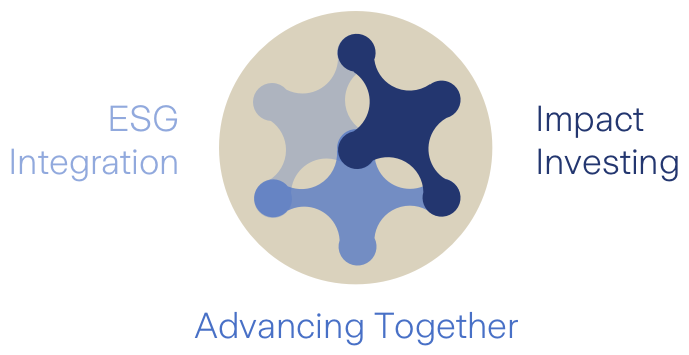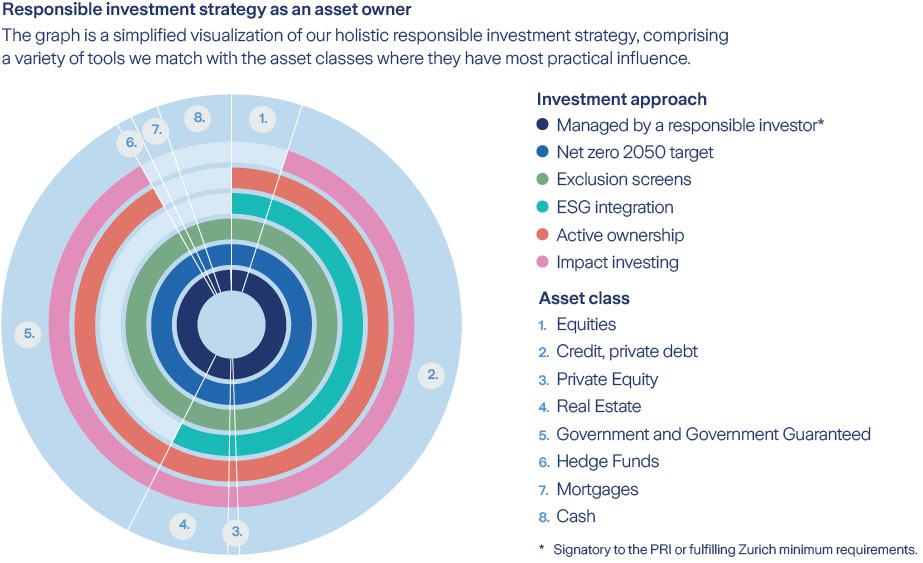
Investing responsibly
We are a responsible investor
Zurich is proud to be a leading responsible investor. We believe creating long-term, sustainable value - doing well and doing good - is not only possible, but necessary. When we do ‘well’, we generate superior risk-adjusted returns for our customers and shareholders. When we do ‘good', we have a positive impact on society and the communities where we live and work. Whether it’s helping reduce CO2 emissions or helping people improve their lives, our in-house and external experts focus on improving the financial performance, transparency and positive impact of our portfolio.
Since we manage approximately USD 170 billion of own assets, by doing well and doing good, we can achieve substantial, long-term outcomes that benefit both people and the planet. On top of investment returns, we focus on three distinct outcomes: fully decarbonizing our investment portfolio by 2050, as well as helping avoid 5 million metric tons of CO2 emissions and benefiting 5 million people per year through our impact investments.
At Zurich, we aim to be one of the most responsible and impactful businesses in the world. Our approach to investment is no exception.
Zurich is a signatory to the United Nations-backed Principles for Responsible Investment (PRI) and the Operating Principles for Impact Management. Our comprehensive responsible investment strategy covers the entirety of our proprietary assets, matching a variety of responsible investment tools with the asset classes where they have most practical influence, and is also applicable to many of our unit-linked offerings.
Our responsible investment strategy
Responsible investment means different things to different people. There are a number of approaches and tools for responsible investment.
Zurich’s strategy comprises three core elements while consistently integrating climate action, and following a group-wide approach on exclusions:

ESG Integration
• Training
• Information
• Process Integration
• Active Ownership
Integrating environmental, social and governance factors
Learn more
Impact Investing
• Intentionality
• Measurability
• Profitability
Making an impact by funding solutions
Learn more
Advancing together
• Innovation
• Collaboration
• Public advocacy
Collaborating to advance responsible investment
Learn moreHelpful documents - More about responsible investment
Was this page useful? Rate it below. Thank you! Welcome back, you have already rated this page.
Privacy and Cookies
Cookies help us improve your website experience. By using our website, you agree to our use of cookies.
Read our privacy policy




